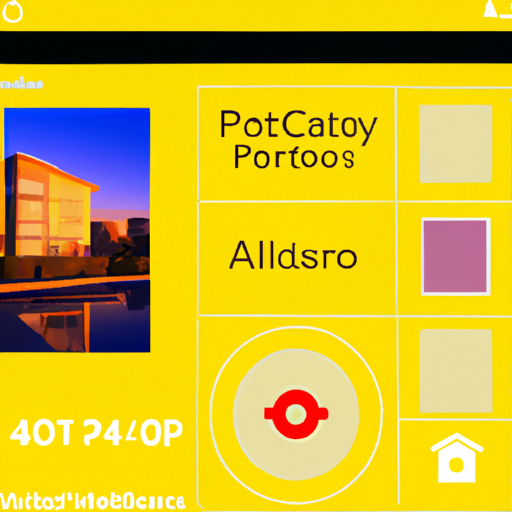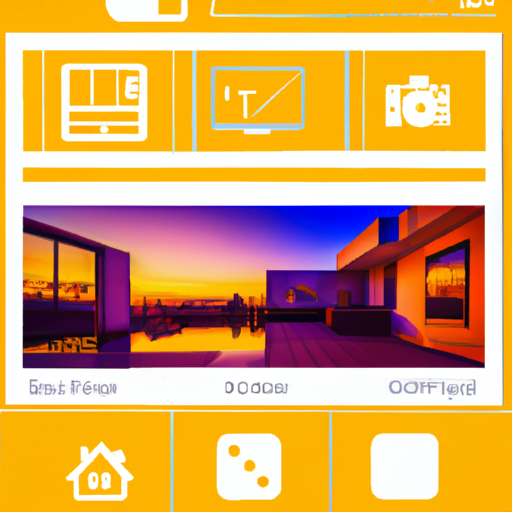
-
Table of Contents
Interface Design for Real Estate Platforms

Real estate platforms have become increasingly popular in recent years, providing users with a convenient way to buy, sell, and rent properties. However, the success of these platforms heavily relies on their interface design. A well-designed interface can enhance user experience, increase engagement, and ultimately drive more transactions. In this article, we will explore the key principles and best practices for interface design in the context of real estate platforms.
The Importance of Interface Design
Interface design plays a crucial role in shaping the user experience of a real estate platform. It determines how users interact with the platform, find relevant information, and complete transactions. A poorly designed interface can lead to frustration, confusion, and ultimately, user abandonment. On the other hand, a well-designed interface can create a seamless and enjoyable experience, leading to increased user satisfaction and retention.
Understanding User Needs
Before diving into the specifics of interface design, it is essential to understand the needs and expectations of the target users. Real estate platforms cater to a diverse range of users, including buyers, sellers, renters, and real estate agents. Each user group has unique requirements and preferences, which should be taken into account during the design process.
For example, buyers may prioritize features such as advanced search filters, property comparisons, and saved searches. Sellers, on the other hand, may value easy listing management, analytics, and communication tools. By conducting user research and gathering feedback, designers can gain valuable insights into user needs and tailor the interface accordingly.
Simplicity and Clarity
One of the fundamental principles of interface design is simplicity. Real estate platforms often contain a vast amount of information, including property details, images, maps, and user reviews. It is crucial to present this information in a clear and organized manner, avoiding clutter and overwhelming the user.
Here are some best practices for achieving simplicity and clarity in interface design:
- Use a clean and minimalist layout, with ample white space to reduce visual noise.
- Group related information together and use clear headings to guide users.
- Ensure that navigation is intuitive and easy to understand, with clear labels and logical hierarchy.
- Use consistent and familiar design patterns, such as search bars and filters, to enhance usability.
Visual Hierarchy and Information Architecture
Real estate platforms often present a large amount of information, and it is crucial to establish a clear visual hierarchy to guide users’ attention. By prioritizing and organizing information effectively, designers can help users find what they are looking for more efficiently.
Here are some techniques for establishing a visual hierarchy:
- Use size, color, and typography to differentiate between different levels of information.
- Highlight important elements, such as property prices or key features, using visual cues.
- Group related information together and use consistent formatting.
- Consider the flow of information and ensure that users can easily navigate between different sections.
Responsive Design and Mobile Optimization
In today’s mobile-driven world, it is essential for real estate platforms to be optimized for mobile devices. According to a study by the National Association of Realtors, 76% of home buyers use their mobile devices to search for properties. Therefore, responsive design is crucial to ensure a seamless experience across different screen sizes and devices.
Here are some considerations for mobile optimization:
- Design for touch interactions, with larger buttons and easy-to-use navigation.
- Optimize images and videos for faster loading times on mobile networks.
- Ensure that all features and functionalities are accessible on mobile devices.
- Test the platform on different devices and screen sizes to identify and fix any usability issues.
Case Studies: Successful Real Estate Platforms
Let’s take a look at two successful real estate platforms that have excelled in interface design:
Zillow
Zillow is one of the leading real estate platforms in the United States, known for its user-friendly interface and comprehensive property listings. The platform’s interface features a clean and intuitive design, with a prominent search bar and advanced filters. Zillow also provides interactive maps, allowing users to explore properties in their desired locations easily.
Rightmove
Rightmove is a popular real estate platform in the United Kingdom, offering a wide range of properties for sale and rent. The platform’s interface focuses on simplicity and clarity, with a minimalistic design and clear navigation. Rightmove also provides useful tools, such as property value estimates and local area information, to help users make informed decisions.
Conclusion
Interface design plays a critical role in the success of real estate platforms. By understanding user needs, prioritizing simplicity and clarity, establishing a clear visual hierarchy, optimizing for mobile devices, and learning from successful case studies, designers can create interfaces that enhance user experience and drive engagement. A well-designed interface can ultimately lead to increased user satisfaction, higher conversion rates, and a competitive advantage in the real estate market.
